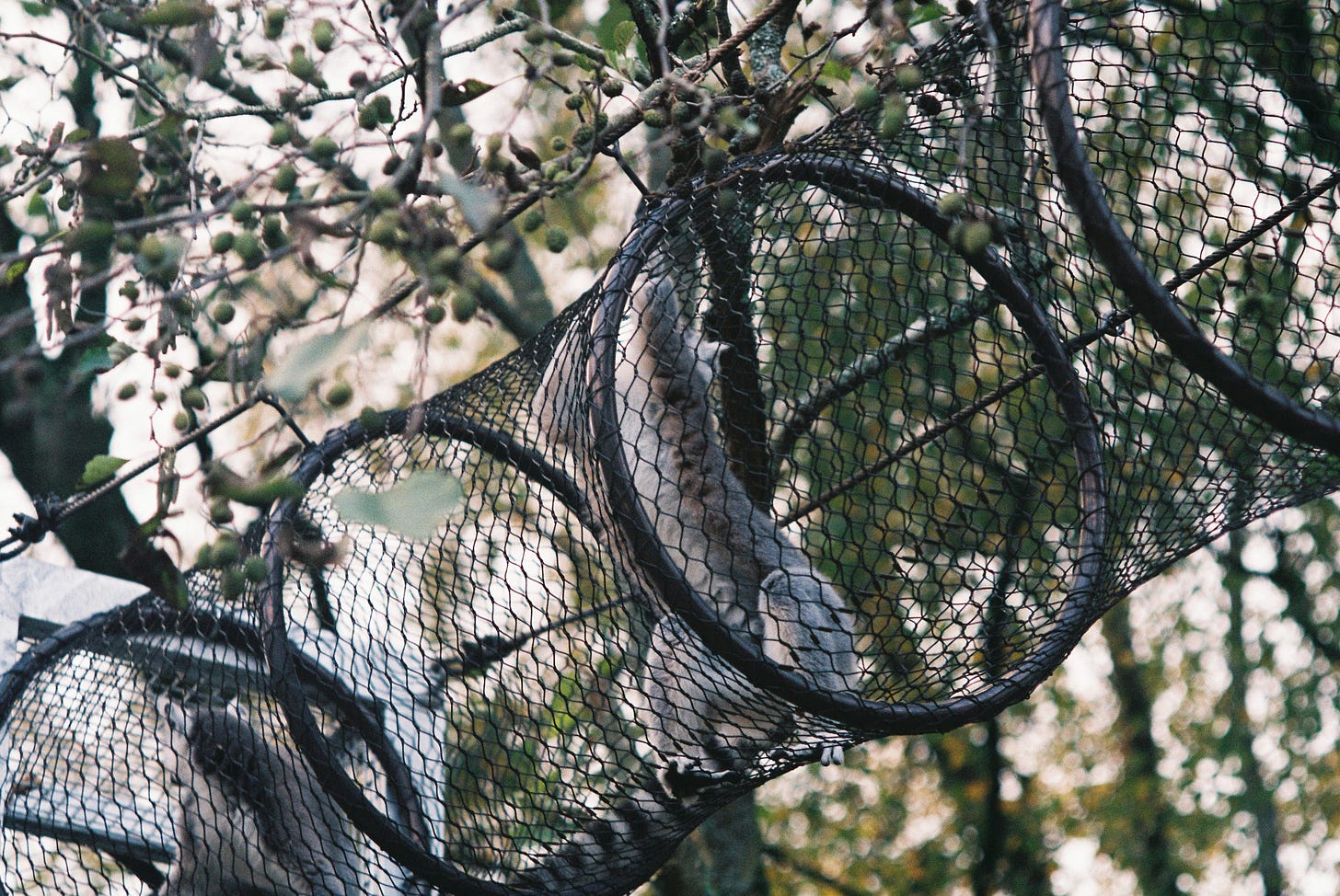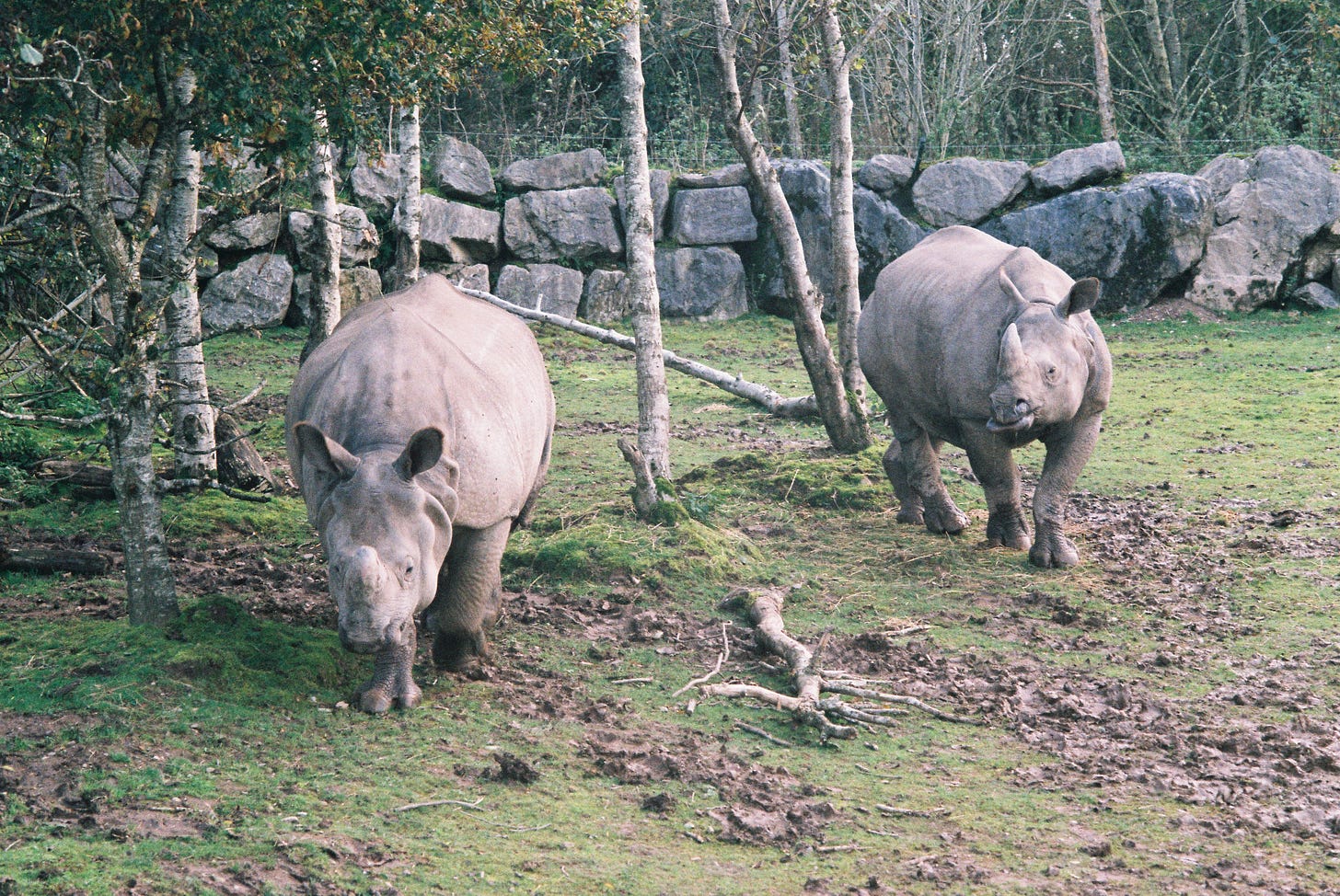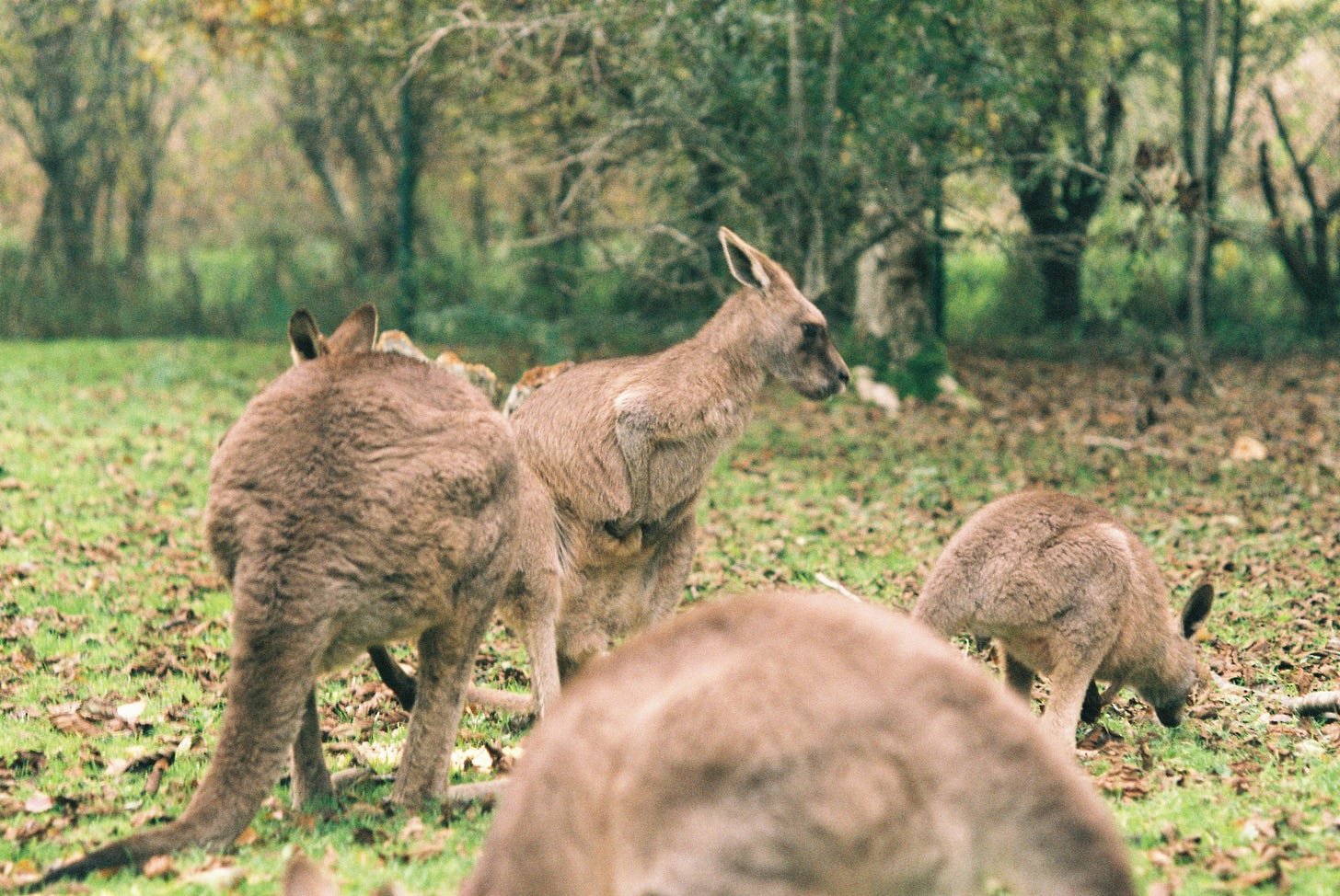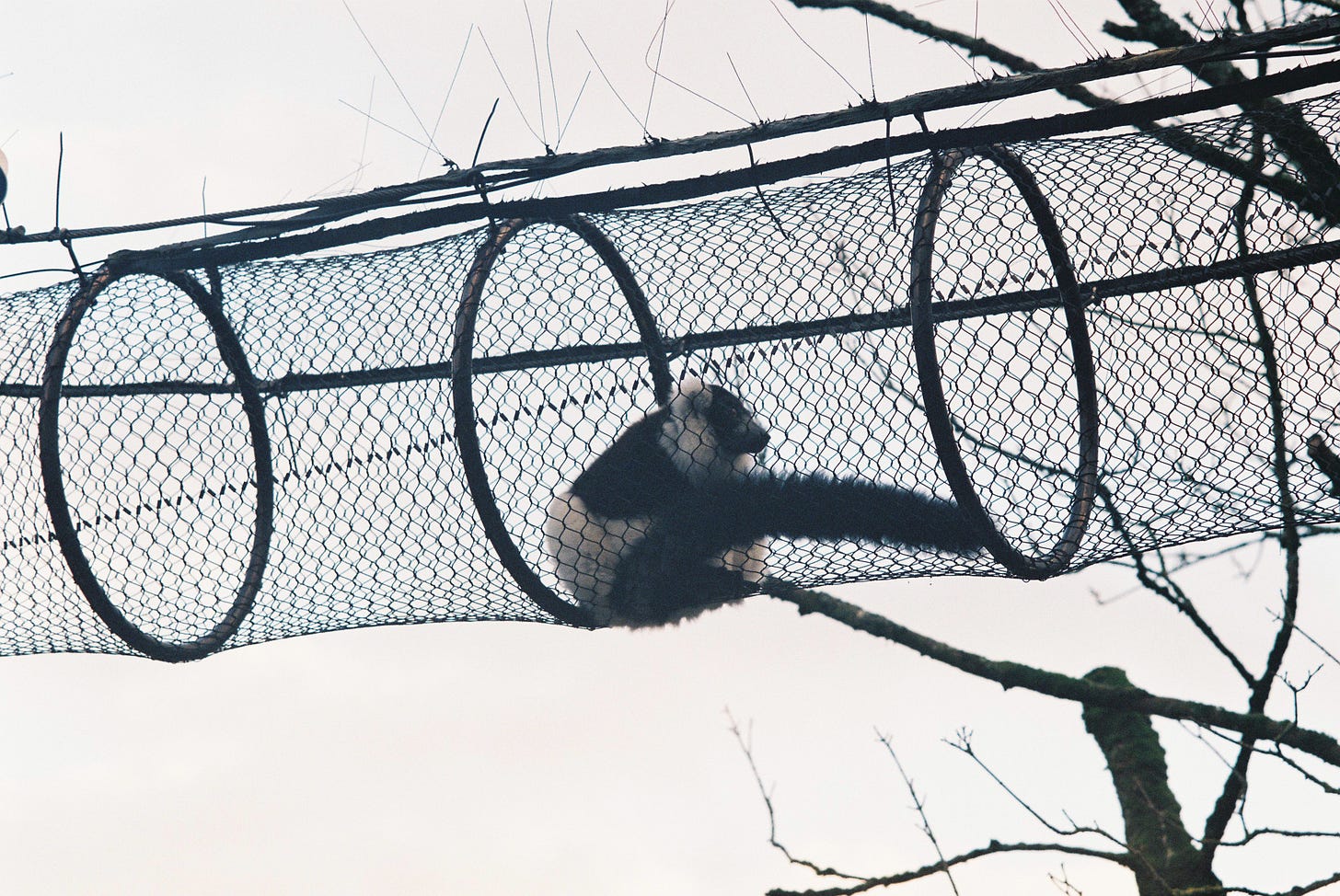Monkey Business
A Closer Look at "Close to Home"
👋 This is another in a series of monthly posts investigating books that have influenced my writing. In case you missed them, you can read the previous ones here:
With A Conscious Moral Purpose: A Closer Look at “What Belongs to You”
The Moment As It Passes You By: A Closer Look At “Leaving the Atocha Station”
My parents used to tell me this story about an experiment involving five monkeys in a cage. There's a ladder in the cage too, and hanging above the ladder is a banana. When one of the monkeys climbs the ladder to go for it, the scientists douse all five monkeys in ice water. This only has to happen once or twice for the monkeys to get the memo: leave that banana alone.
Then the scientists swap out one of the test subjects. The new monkey sees the banana and goes for it. As soon as they step on the bottom rung, the other four monkeys panic and attack him. Lesson learned. Touch the ladder, get beaten up. The scientists swap another monkey, and another, and continue until all five monkeys are replaced. And even though none of them know exactly what will happen if they ever do climb that ladder, none will let another try.
Close to Home is the electrifying 2023 debut from the West Belfast native, Michael Magee. It is the tightly-scoped portrait of a twenty-something who, having followed the promise of secondary education as a way out of post-recession Belfast, finds himself pulled back in the same cycle of party-fueled financial precarity he left. The novel is punchy in that it starts with a punch: Sean assaults someone at a party, an act with ramifications both legal and psychological that unravel in the weeks that follow. Sean gets arraigned, sentenced, and slowly starts to seriously reconsider the direction of his life.
When it was published, the novel was often touted as being “about” West Belfast, or “about” the Troubles or “about” the ceasefire generation—children of the children of the conflict. But what I’ve learned most as a writer from this novel has more to do with contemporary masculinity more generally: how Magee tackles what a man is and the invisible barriers precluding these boys from growing up.
You hear anything about your man?
What man?
The man, the fella you hit.
He wasn’t a man. He was our age.
We’re twenty-two, Sean. We’re men.
Right enough, we were. But I couldn’t work out why the word still felt wrong.
It’s an honest investigation of the social force propelling so many young men towards self-destruction and self-sabotage—and yes, Magee does great work to situate the political particulars of this force, the trauma at its heart, interjecting cutting anecdotes from parents about life during the Troubles, how the pain radiates downward through generations—but it is still that general force that interests me most. Because context aside, it's somewhat universal (at least in the West), that thing that makes young men angry and violent, that turns midday pints into three-day benders, shirts ripped, noses bleeding.
Here’s something that might surprise you: the term “toxic masculinity” did not, as I’d assumed, come from feminist theory. It was coined by the “mythopoetic men’s movement” of the 1980’s. If that name has you imagining middle-aged dudes practicing vaguely appropriative Native American forest rituals in suburban woods somewhere, shirtlessly banging drums and screeching, a primitive regression to simpler times when “men could be men”… you’d be dead right actually, that's exactly what it was, well done.
The mythopoets were chiefly (pun intended) concerned with restoring the “deep masculine,” Jungian archetypal attributes they saw disappearing from modern society: brotherly solidarity as men; limited interaction with the home and women; strengthening of the father-son dynamic; healthy emotional expression. They distinguished this from what they called the “toxic masculine” which stands diametrically opposed to it. Men viewing each other strictly as violent competition. Hyper-fixation on women, as in, sexualisation and misogyny. Absentee fathers. Stoicism. Emotional repression with the exception of anger. All of the hallmarks of hegemonic masculinity. They would hate Andrew Tate is what I'm trying to say.
The world Sean inhabits is exactly what these mythopoets would call “toxic.” Every intermale relationship is underscored by the threat of violence and competition. Like when Marty, a childhood friend of Sean’s brother Anthony, gets dragged to the pub the night before an important early meeting that could lead to a steady paycheck. Anthony gets a round of pints and Marty refuses, then relents to just the one. Sean visits the men’s room and returns to a scene:
…a crowd of people had gathered around the snooker table and were chanting, Par-ty Mar-ty, Par-ty Mar-ty, Par-ty Mar-ty. Marty was up on top of the snooker table. He had his shirt unbuttoned and was dancing with his hands up in the air.
We got him, Anthony said.
What do you mean, you got him?
He picked up his pint and showed me how he had spiked Marty, with an E.
That’s him out for the week, he said.
Marty doesn’t make it to the interview. He never gets the job. It is not coincidental that Anthony’s focus on bringing Marty back down to his level intensifies with the opportunity to ascend it.
Magee makes clear from the start that Sean is different from the men around him. The degree that was supposed to secure an escape was in English Literature. So he shoplifts, sure, but it’s a Knut Hamsun novel under his arm. When he and Ryan run a scam in their local grocery store, it’s Sean who gets the food they need to live while Ryan gets the vodka. For all of his gruff bravado, it becomes clear early that Sean has higher aspirations than his environs. This subtle moral elevation is primarily accomplished by comparison, lifting one by relegating others, rooted as the novel is in artistic exceptionalism.
About halfway through the novel, Sean more firmly pulls the reins on his antics. This is in part thanks to the emergence of Mairéad, a childhood girlfriend of Sean’s who has recently graduated from a university in Belfast, and is similarly stuck in a cycle of abusive jobs with nowhere to stay, trying to get out. Sean is introduced to her university friends, a crowd distinctly unlike his own: posh artist types. They mean well and the worst fault of these Paul Simon-loving gallery-going yuppies is that they can be, in Sean’s words, “a bit much.”
And then, following the tracks of so many literary figures before him, Sean submits a short story to a local magazine. It gives him the hope that he can create something with his life. Something meaningful. Something that matters.
Namely, fiction.
It is to the novel’s credit just how satisfying Sean’s redemption is, especially how it resists sentimentality. We’re really rooting for him. But it left me wondering: what is so morally redemptive about the arts? The world of university students who discuss politics in the backs of candlelit bookstores is positioned in diametric opposition to those drunkenly dancing in nightclubs, dreaming of Australia. It is an idealized view of a space which in real life can be equally problematic, a different schema of violence that responds to a different system of weaponization.
What is definitively good about the new world Sean finds himself in is that he doesn’t drink or habitually do cocaine or hit people in the face. But this abstention coincides with class ascension and risks conflating the two. The version of this novel written two hundred years ago might have found Sean bumbling into a church instead of a bookstore, finding Christ instead of Ernaux.
This is the part where I make clear that Sean’s journey is well-defined in the history of literature: salvation stories have existed since Jesus (that’s a joke) and as for their arts-centered variants, Magee’s Close to Home is in the comfortable company of Dickens’ David Copperfield, Joyce’s Portrait of the Artist of a Young Man, and on.
W. Somerset Maugham himself inscribed his 1915 Bildungsroman Of Human Bondage with:
This is a novel, not an autobiography; though much in it is autobiographical, more is pure invention.
Here’s Magee, some hundred-plus years later, with a similar sentiment:
Part of the difficulty in writing this was gauging the distance from the material. I was swaying between memoir and fiction when I changed the narrator’s name from Mick to Sean, which allowed me to see Sean as a shadow version of myself and take the step back I needed.1
Novelists who found purpose in literature writing personally informed novels about protagonists finding purpose in literature is understandable. Who could possibly have a higher opinion of the transformative power of writing fiction than those whose lives were transformed by writing fiction, after all? And yet, despite its historical precedent, the cynic in me always finds slight difficulty reconciling this purported dichotomy. Sean and Mairéad are the only ones from their social circle who escape their cycles. Is it any coincidence that they’re also the only ones who have seen La Haine?
It turns out there never was an experiment with five monkeys, by the way, not the way my parents used to tell it. The closest I found was a study from 1967, when Gordon R. Stephenson was researching cultural acquisition of learned responses among rhesus monkeys. A monkey was exposed to an object that, when manipulated, “punished them.” Once they learned to avoid manipulating the object, they were placed into cages with naïve partners who had never seen the object before. Some of the trained monkeys exhibited “threat facial expressions while in a fear posture” when their naïve partner approached the manipulandum. One trained monkey actually pulled his partner away from the object during their interaction, as if to save them.2
The lesson of the original parable is metaphorically apt: we are the monkeys in that cage, looking up at a ladder we refuse to let each other climb. It fits nicely to describe the inherited trauma of Sean and his friends, the pain that belongs to them rooted in memories and history that don’t, that unknowable driving force separated by just a generation. But the truth is almost more apt, that they—and us—are trapped not with something as alluring as a banana but as deterring as a gun, partnered with those who have already felt its blowback. They are the only ones who can teach us how to put it down. And yes, writing might be the ladder, as it is in this novel. But maybe it is only a way to name the cage.
I’m in the middle of editing a novel and, while I’m working on a project like that, I have to be careful that everything I read is intentional: I choose books that have some component I admire whose mechanics I want to understand better at a sentence level. What Close to Home does so well is this examination of contemporary masculinity, men who have enough self-awareness to understand its problematic nature, but who are largely ill-equipped to change.
That has wound up being the gist of these essays more generally, really, analyzing the components that drew me to read or, as in this case, re-read novels that illuminate how to do something really well. Good artists borrow, great artists steal, and the best artists steal from Michael Magee.
-JSR
P.S. For those keeping score at home, these photographs come from Fota Wildlife Park in Cork. It was the first overnight trip I ever took with Sarah in 2019. Favorite moment: being told to get off a bench by a staff member so that a troop of lemurs could bounce past.
Stephenson, G. R. (1967). Cultural Acquisition of a Specific Learned Response Among Rhesus Monkeys. in Starek, D., Schneider, R., And Kuhn, H. J. (Eds.), Progress in Primatology, Stuttgart Fischer, Pp. 279-28





